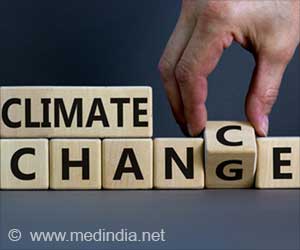Analysis of satellite data has revealed extreme summer snowmelt in northern Greenland during the summer of 2008, with large portions of the area subject to record melting days.
Analysis of satellite data has revealed extreme summer snowmelt in northern Greenland during the summer of 2008, with large portions of the area subject to record melting days.
The study was conducted by Dr. Marco Tedesco, Assistant Professor of Earth and Atmospheric Sciences at The City College of New York (CCNY), and colleagues.Their conclusion is based on an analysis of microwave brightness temperature recorded by the Special Sensor Microwave Imager (SSM/I) onboard the F13 satellite.
"Having such extreme melting so far north, where it is usually colder than the southern regions is extremely interesting," Professor Tedesco said. "In 2007, the record occurred in southern Greenland, mostly at high elevation areas where in 2008 extreme snowmelt occurred along the northern coast," he added.
Melting in northern Greenland lasted up to 18 days longer than previous maximum values.
Also, the melting index, i.e. the number of melting days times the area subject to melting, was three times greater than the 1979-2007 average.
"The results obtained from SSM/I are consistent with the outputs of the MAR (Model Atmospherique Regional) regional climate model, which indicated runoff 88 percent higher than the 1979 - 2007 mean and close to the 2007 value," Professor Tedesco noted.
The snowmelt and temperature anomalies occurred near Ellesmere Island, where several ice shelf break-ups were observed this summer.
Professor Tedesco and his colleagues are currently analyzing possible causes for the high snowmelt in northern Greenland.
High surface temperatures are, so far, the most evident factor. However other factors, such as solar radiation, could play a role, as well, noted Professor Tedesco.
"The consistency of satellite, model and ground-based results provides a basis for a more robust analysis and synthesis tool," he added.
Next June, he and his colleagues plan to conduct field work in northern Greenland.
Source-ANI
RAS/SK
 MEDINDIA
MEDINDIA

 Email
Email




